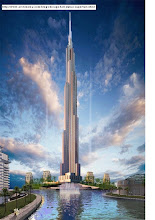Friday, November 14, 2008
Laptops and Sun
A passive solar design of a building is to make a building efficient while using the essentially free energy of the Sun. Having a house that faces south is essential in the design, and shading should not detract the south wall from the Sun. The angles of sunlight during the summer and winter solstice determine where it is appropriate to have shading. Essentially, solar design is eco-effective if it maximizes the heat gain in the winter and maximizes the heat loss in the summer using environmental advantages such as the Sun.
Friday, October 31, 2008
Speech Recognition
Friday, October 24, 2008
Timeline for Fiber Optics
1956 - First patent of fiber optic semi-flexible gastroschope by Unviresty of Michigan's Basil Hirschowitz, C. Wilbur Peters and Lawrence E. Curtiss.
1960 - Narinder Singh Kapany starts Optics Technology Inc. and retains the executive positive for 12 years.
1965 - Practical use of optical fibers was cosidered and suggested by Charles K. Kao and George A. Hockham of Standard Telephones and Cables (STC).
1970 - Attenuation of 20dB/km by researchers from Corning Glass Works was successful by doping sicica glass with titanium.
197(3) - A few years after Corning Glass Works produces 17dB/km fiber they expiriment with germanium dioxide as a dopant and conduct 4dB/km. This allowed for intense communication such became the internet.
1973 - Gerhand Bernsee invents glass core and sheath fiber that resists aging.
1981 - GE, General Electric makes fused quartz ingots drawn into fiber optics 25 miles long.
1991 - Studies of photonic crystals leds to photonic crystal fiber which uses periodic structre, opposed to internal refraction.
2000 - Commercially available photonic crystal fibers enable manipulation to improve performance and create a faster internet over longer distances.
2008 - Rumors that companies are in development of fibers that manage speeds of up to 1 Tb/s.
Friday, October 10, 2008
Telecom Corridor
Telecommunications is essential for a global city in the modern era because as Sassen pointed out it has shaped the layout and planning of metropolitan areas. Richardson, Texas is a fine example of how the telecom industry elevated and expanded the metroplex. Known as the telecom corridor, more than five thousand companies have headquarters in the metroplex, such as, Sprint, Texas Instruments, Verizon, and Cisco Systems. Dallas, Richardson, and Irving act as a hub for the entire industry, and the market depends particularly upon these cities. Additionally, north Texas relies in several ways on the telecommunications industry to maintain the status of a global city. The telecom corridor makes the metroplex economically sound, and in respect to the headquarters of corporations keeps them present.
Telecommunications helps people communicate and conduct business faster and more efficiently. Creating jobs, the industry can help and support the economy tremendously. Entertainment and a better quality of life are often results of updated telecom products. Computers, television, cell phones all rely on the global cities ability to meet the telecom needs of the population.
Power and energy can create a shortfall of information, systems can crash and devastation can occur due to natural disasters or human error. The loss of jobs is just as likely as jobs being created when the industry takes a downward turn, and as a result the economy could suffer that much more. People can take advantage; hacking and identity theft are major problems caused by telecommunications.
Friday, October 3, 2008
Bullets
The bullet supports and has supported the military for a number of reasons. Ballistics in the 16th century is a far cry from those such as the hollow point of today. The evolution of the round bullet demonstrates the military’s reliance on the bullet and firearm. The purpose of the bullet is to damage a target. When at war, a military will often need to destroy targets or defend their own targets in order to defeat their opposition. The study and science of bullets lead to the development and the widespread use of the bullet throughout the 19th century. By the American Civil War 90% of casualties were by the minnie ball (wiki/Bullet).
Economically, bullets are a buy compared to the overall spending on defense in the United States. Of the 489 billion dollars spent less than a percentage was toward bullets. The high casualty rate makes any military a threat with the use of up to date weaponry. A major factor in a military’s strength is having this type of high casualty rate. The technological advances in the bullet industry advantage a military which has the most progress in this field. Lastly, the use of guns is coupled with this arguement and can be used for intimidation. There are complementary goods in the industry making both catalysts for the military.
Corrosions on the military by the bullet include cornering the market for weapons; for example, other technologies are not as well looked into that might have the same function as a bullet but better cost wise. Communication and information are examples of other means of winning a battle or war, but are used only in the prenup. The bullet makes a military violent.
